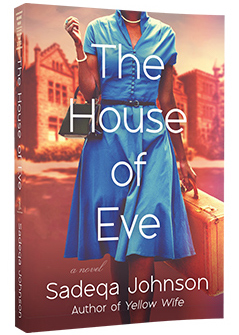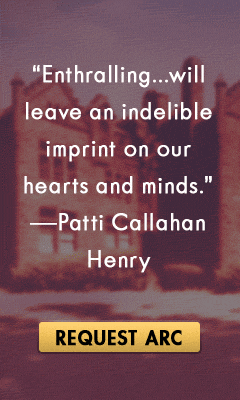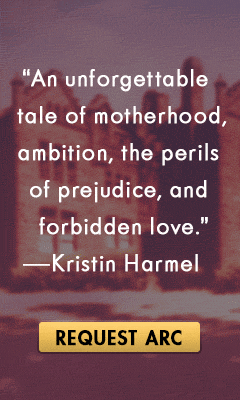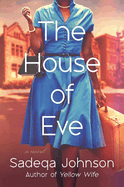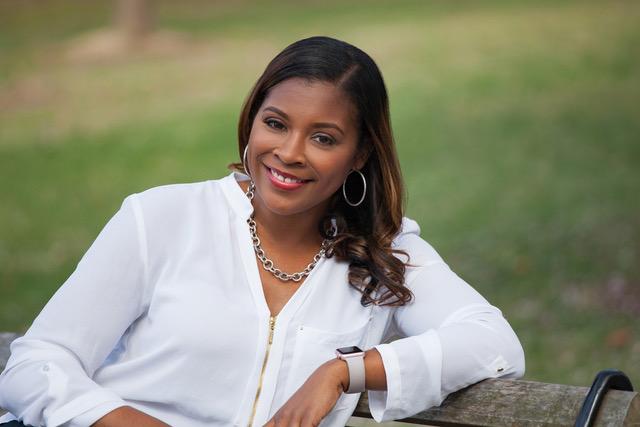The House of Eve
by Sadeqa Johnson
Sadeqa Johnson's powerful, heart-wrenching fifth novel, The House of Eve, follows the experiences of two young Black women in the mid-20th century whose stories intersect in an unexpected way. Told in alternating chapters that vividly bring her two protagonists to life, Johnson's novel explores the nuances of first love, female ambition and colorism in the Black community, along with shame and sacrifice and what it truly means to be a woman.
Johnson (Yellow Wife) opens her narrative with Ruby Pearsall, who is on track--she hopes--to get out of her rough Philadelphia neighborhood. Living with her unconventional Aunt Marie (Ruby's mother, Inez, lives nearby but is not particularly interested in, or available to, her daughter), Ruby works hard at an after-school enrichment program that will give her a shot at a college scholarship. She's constantly fighting to scrape up the change for carfare and ignoring the catcalls (and other advances) of men in the neighborhood, but Ruby is determined to get that scholarship and, eventually, go to medical school. But when she falls in love with Shimmy Shapiro--the boy next door who's not only white, but Jewish--their forbidden love might derail Ruby's dreams and her chance at climbing out of poverty.
Meanwhile, Eleanor Quarles, a brilliant college student from small-town Ohio, is thrilled to be studying at Howard University. She enjoys her classes and her archival work in the campus library, under the direction of Dorothy Porter, a librarian dedicated to preserving Black history. When Eleanor falls in love with William Pride, a handsome medical student, she thinks life is nearly perfect--until she meets his upper-crust parents, pillars of Black Washington, D.C., society. Although his mother disapproves, Eleanor and William soon marry, and Eleanor believes having a child will help her to fit in with her new in-laws and their societal expectations. But as she struggles to carry a child to term, she can't shake the feeling that something is wrong with her.
Through Johnson's sensitive dual narration, she highlights the contrasts and the parallels between her two protagonists. Eleanor comes from a loving family, but finds it hard to share her difficulties with her parents back in Ohio, after all they've sacrificed to send her to Howard. Ruby, not wanting to burden her Aunt Marie, still longs for her mother's affection, although Inez has rejected her on multiple occasions. Both young women must make their own way forward, with limited, albeit necessary, support from the older women in their lives. Each of them also must decide how she wants to live her life: whether and how to juggle love, financial security, career dreams and the chance to build a family.
Johnson's ensemble cast includes a range of characters besides methodical Eleanor and scrappy Ruby, and Aunt Marie, who knows exactly how far to push the envelope to defy convention. Johnson even shows Inez, who seems to prioritize her revolving door of romantic interests over her daughter, in her complexity. Rose Pride, William's mother, rules the social world she has created with an iron fist, and Eleanor meets several fellow Howard students who are poised to follow in Rose's footsteps. Johnson convincingly portrays the experiences of these women of varying ages, skin colors, social classes and generations, as well as auxiliary characters like Eleanor's roommate Nadine and the librarian Mrs. Porter.
Although Johnson treats her characters with compassion, she doesn't shy away from the tough realities of the choices they are forced to make. Ruby must choose between her love for Shimmy and her chance for a secure financial future; although Shimmy swears they can build a life together, Ruby is pragmatic enough to know better. When their love leads to an unexpected pregnancy for Ruby, she is the one who must shoulder the burden of their decisions. However, Mrs. Shapiro intervenes, and Ruby ends up at a home for unwed mothers, where she faces cruelty and condescension, but also forms unexpected bonds with her fellow residents. Meanwhile, though Eleanor loves William and is eager to create a family with him, she quickly learns that being a member of the Pride family--especially being the daughter-in-law Rose Pride didn't expect--is much more complicated than Eleanor thought. Rose's solution to Eleanor's problem will test the bonds of Eleanor's new marriage, as well as shifting her perceptions of what a family should (and can) be.
Full of period details about campus life at Howard University, society functions among D.C.'s Black elite and life in the hardscrabble neighborhoods of Philadelphia, The House of Eve illuminates a range of Black female experiences at a time when women were fighting for agency over their own lives. While Ruby and Eleanor face wildly different challenges, their lives and decisions will converge in a way that powerfully shapes both of their futures. Johnson's clear-eyed storytelling will keep readers engrossed, and her deep compassion and insight will provoke reflection on what it means to be a woman and a mother. --Katie Noah Gibson



